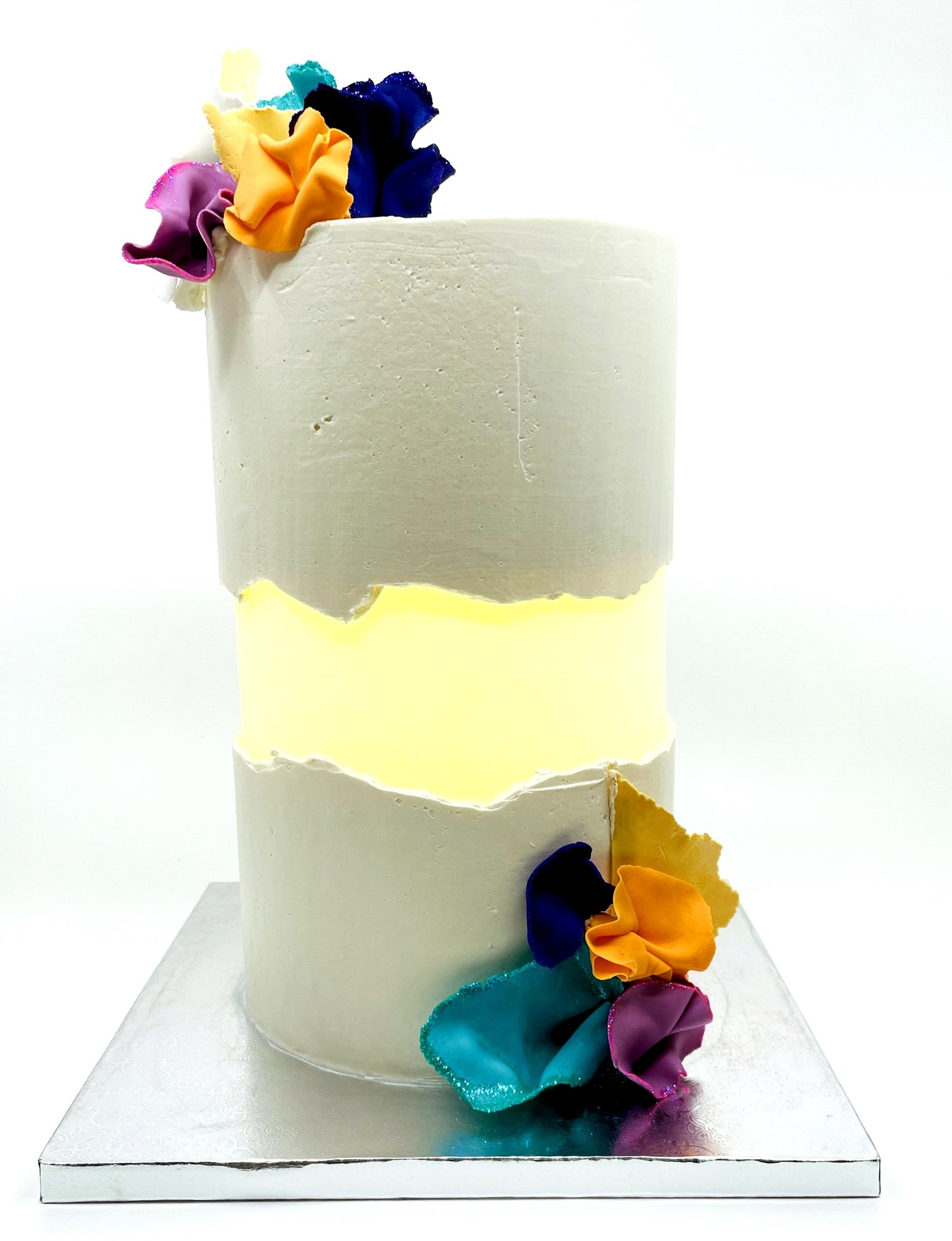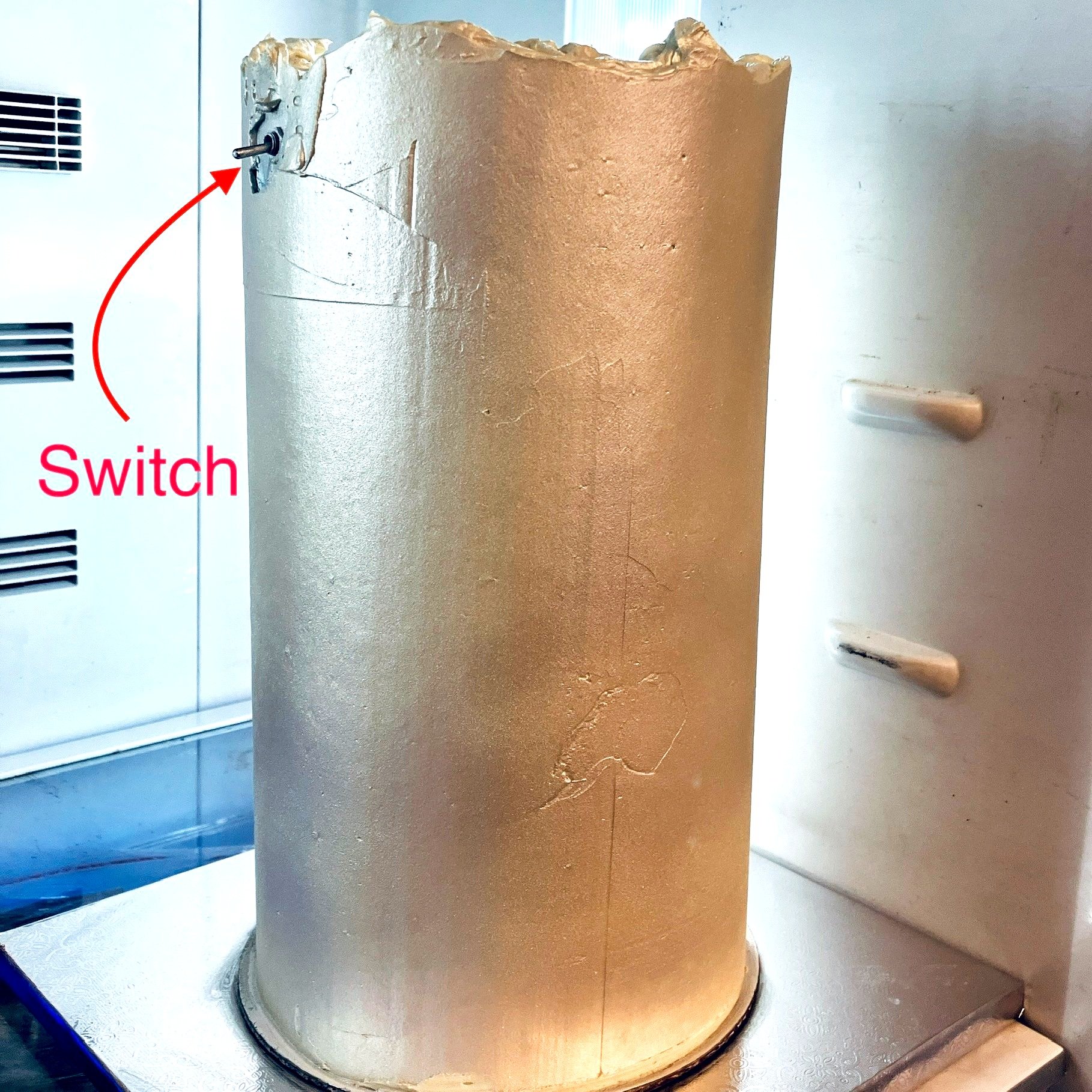TheLi.st Holiday Party
The Brief:
A Christmas party for a woman’s network whose theme for the coming year is “Togetherness.”
The logistics:
50+ women in at SoHo loft. Lots of ambient noise but also moments of relative quiet during speeches. The location has an elevator, but is accessed via several cobblestone streets which make delivery a wee bit more stressful. Cake cutting to be done by attendees so must be straightforward (no wires).
The Idea:
A tiny ‘gingerbread house’ with sound activated lights and a smoking chimney sitting on top of a double barrel height cake, decorated with the names of all the network members.
I used sound activation to play with the idea of voices working together to achieve a common goal. The house evokes the image of all members being together under one roof, while also giving a nod to classic holiday card iconography.
The Flavor:
Lemon cake with vanilla Swiss meringue butter cream.
The build:
- Adafruit’s Circuit Playground Bluefruit
- 3 AAA batteries
- A 3D printed* ‘layer’ to house the electronics
- A 3D printed reservoir for the water
*3D printed parts are made from food safe PLA and washed before assembly. Enclosures are wrapped in cling film before being placed on a cake.
A carve-out in the icing reveals the power switch. I’ve experimented with slide switches and button switches, but a simple toggle switch is both satisfying to use, and doesn’t put any additional stress on the cake from unnecessary pushing or maneuvering.
The names were laser cut into 2 mylar stencil sheets. Multiple practice stencils were made to check the readability of different fonts. The final cake actually took 4 tries (icing, stenciling, scraping off, re-icing) before it was sharp enough that all 410 names were readable. Luckily my go-to Swiss Meringue Butter Cream icing is very forgiving.
The house was cut out of and assembled together with tempered chocolate. Royal icing ‘snow’ accents were added later.
The piezo humidifier was connected to the circuit playground via a mosfet transistor to enable it to be switched on and off without damaging the playground. (Just like you’d use with a motor)
The playground’s inbuilt sound sensor plus the Circuit Python code examples on adafuit.com made getting it all up and working relatively simple. The most difficult parts came (as is almost always the case) in thinking through how to assemble and transport the cake with an inbuilt water reservoir for the ‘smoke.’
While the humidifier can be placed directly on top of water, (some even use form factors that float) I needed it to remain in place regardless of the water level. So I used a filter that works like a sponge to draw the water up the base of the piezo and made a simple cup in Tinkercad to hold it in place.
To calibrate the sound sensor, I took the assembled component layer to a bar to experiment with different degrees of sensitivity. I needed activation to occur easily enough to trigger the lights and smoke reliably, but not so sensitive that it would just run constantly.









